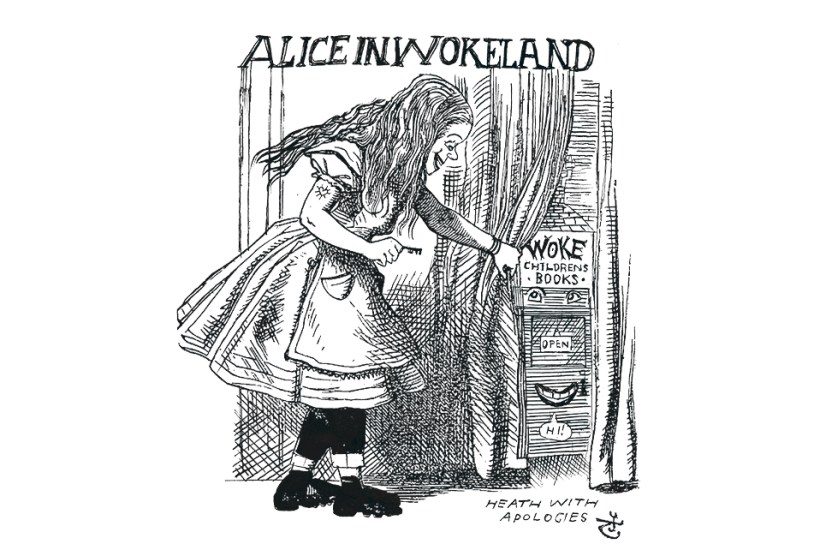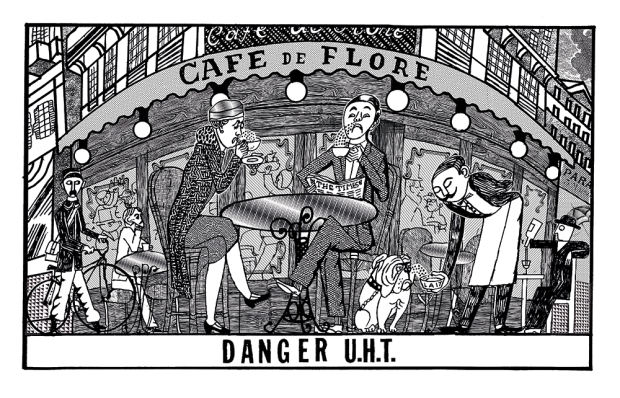Let’s hear it for the Beano, 85 years old this week. Lucky readers can get a commemorative issue featuring Charles and Camilla, Dua Lipa and Lewis Hamilton. It’s also a chance for those who haven’t read it for decades to register how much it has changed. Lately, the Bash Street Kids welcomed five classmates: Harsha, Mandi, Khadija, Mahira and Stevie Starr. There’s a hijab alongside the stripy shirts and school caps, plus a scientist in a wheelchair. Fatty, the boy who ate all the pies, and Spotty, who had pustules and a long tie, have been renamed Freddy and Scotty to ensure young people who have freckles, weight problems or acne are not taunted by their peers.
The comic’s creative director, Mike Stirling, cheerfully admits that the comic has become ‘woke’. ‘We have never seen that as a pejorative term,’ he says. ‘It’s awareness and being awake to things. What would be easy to do would be to sleepwalk and keep the Beano the way it had always been done for ever.’ As in, funny?
The Beano’s changes testify to the influence of Inclusive Minds, a consultancy ‘for people who are passionate about inclusion, diversity, equality and accessibility in children’s literature’. The organisation encourages those it works with to sign its ‘Everybody In’ charter, which declares that ‘everyone working with children and books must play a part in ensuring that all children can find authentic representations of themselves in books, as well as seeing those who are different from them’. Its ‘inclusion ambassadors’ – children and parents – advised on the Beano’s makeover.
The organisation, founded a decade ago by Alexandra Strick and ‘inclusion and equality consultant’ Beth Cox, surfaced earlier this year as the body involved in censoring Roald Dahl’s work for children. You know, the one that ended with Puffin and the Roald Dahl Story Company removing the words ‘fat’ and ‘ugly’. The Oompa Loompas were no longer men, but people. Miss Trunchbull’s horseface disappeared. Some disobliging verses in James and the Giant Peach were rewritten, but the new ones didn’t scan quite so well. In The Witches, a paragraph explaining that witches are bald beneath their wigs ends with: ‘There are plenty of other reasons why women might wear wigs and there is certainly nothing wrong with that.’ Indeed! It’s just not what Dahl would ever have said.
That exercise went well, didn’t it? The agenda rolls on, with Inclusive Minds advising the big five publishers and a number of smaller ones on how to embed inclusivity in their writing, editing and illustration. ‘We do not edit or rewrite texts,’ it insists on its website, ‘but provide book creators with valuable insight from people with the relevant lived experience that they can take into consideration in the wider process of writing and editing.’
I’m not sure the big figures in children’s books quite realised that this is how the agenda works. Sir Quentin Blake – quoted in the Inclusive Minds testimonials praising the aim to ‘ensure all children can see themselves reflected in stories and pictures’, (something he does in his own work) – did not care for the Dahl rewrite, not least because he was Dahl’s illustrator. He told me last week: ‘If the work is wrong, it’s wrong. If it’s crude and insensitive, we need to know that… If the sensitive had their way, [Dahl] would never have written The Twits at all.’
Of course, Inclusive Minds is only one element of the transformation of children’s publishing. The drive for greater diversity and inclusion began, as you’d expect, in the US, where public libraries helped lead the changes. In the UK, the agenda is driven by organisations like the Vital North partnership and Seven Stories: the National Centre for Children’s Books, which brings public funding into the equation.
And let’s not forget the Equality Act. A friend who runs a Montessori school told me that she was making sure there were enough books featuring gay dads and non-nuclear families in her school library because they were expecting an Ofsted inspection, and that’s something the inspectors look out for. Ofsted’s remit under the Act’s public sector equality duty is to ensure that schools promote respect for ‘protected characteristics’. So if your toddler is bringing home Julian Is a Mermaid, Grandad’s Pride – Grandpa went on the original Pride parade with his black partner – or The Kindest Red: A Story of Hijab and Friendship (a little girl learns to celebrate her sister’s hijab), that may be why.
All this has changed how authors, publishers, editors and illustrators work. I spoke last year to the head of a distinguished publishing company who told me that while they do not themselves employ sensitivity readers, she finds herself changing what she commissions and how she steers her authors. In other words, the agenda is in her head. That’s how censorship works best – when it’s internalised. You pre-empt criticism.
Need I say I don’t have a problem with children of different ethnicities or cultures featuring in children’s books? Some of the most vigorous children’s books I have reviewed over the past few years have been from African authors. One of the best books published this year is Alan Garner’s Folk Tales, featuring Indian epics as well as Celtic sagas.
The problem is that as an agenda, diversity and inclusion doesn’t make for good writing. It meddles with the work of our favourite old authors and makes for new story-telling that’s didactic, prescriptive, propagandistic. The sin is that it introduces criteria to publishing other than that a story should be well and grippingly told and illustrated in an evocative, distinctive way. As for adult stories, let’s not even go there; but let’s just say that James Bond is only the start.
Got something to add? Join the discussion and comment below.
Get 10 issues for just $10
Subscribe to The Spectator Australia today for the next 10 magazine issues, plus full online access, for just $10.
You might disagree with half of it, but you’ll enjoy reading all of it. Try your first month for free, then just $2 a week for the remainder of your first year.














Comments
Don't miss out
Join the conversation with other Spectator Australia readers. Subscribe to leave a comment.
SUBSCRIBEAlready a subscriber? Log in